4 minutes
ECOM7121 Introduction
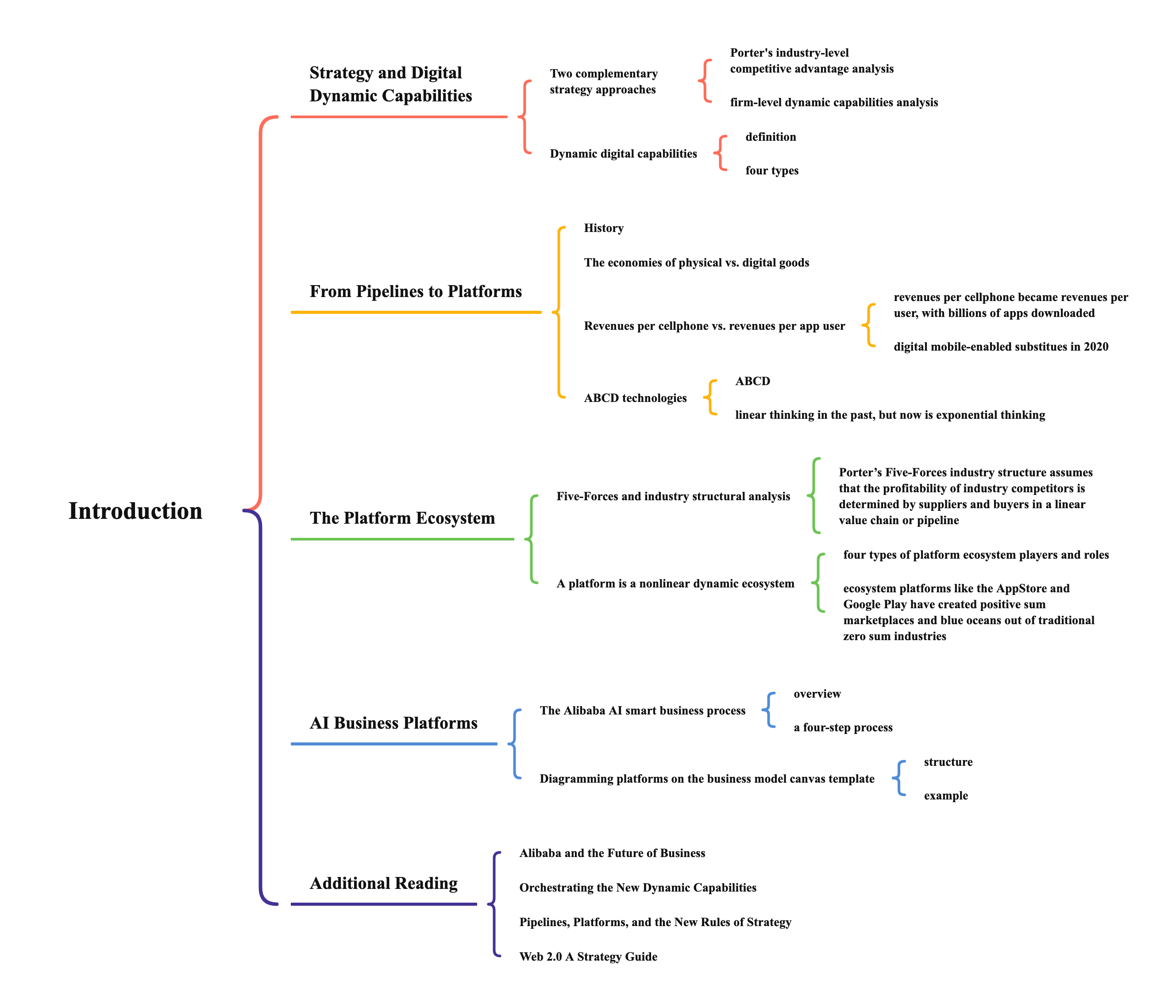
Strategy and Digital Dynamic Capabilities
Two complementary strategy approaches
- Porter’s industry-level competitive advantage analysis
- industry contains lots of firms
- firms would compete with each other
- a firm want to be better, it should do better than the industry average
- example: mobile industry pre-2007
- strategic recommendations to companies below the average
- raise price through differentiation
- can do something in design, e.g. Samsung and Armani
- lower cost to improve profitability
- it was not very easy to do because what you could do for cost was already being driven down as much as possible globally
- raise price through differentiation
- strategic recommendations to companies below the average

- firm-level dynamic capabilities analysis
- start by the firm
- firms can actually disrupt, shape and transform entire industries
- example: Apple transformed mobile industry in 2008
- by digital innovation (AppStore)
- combining and collaborating
- have a company like Apple who can orchestrate that collaboration on a platform
- apple provide a platform (inside) for developers (outside)
- by digital innovation (AppStore)
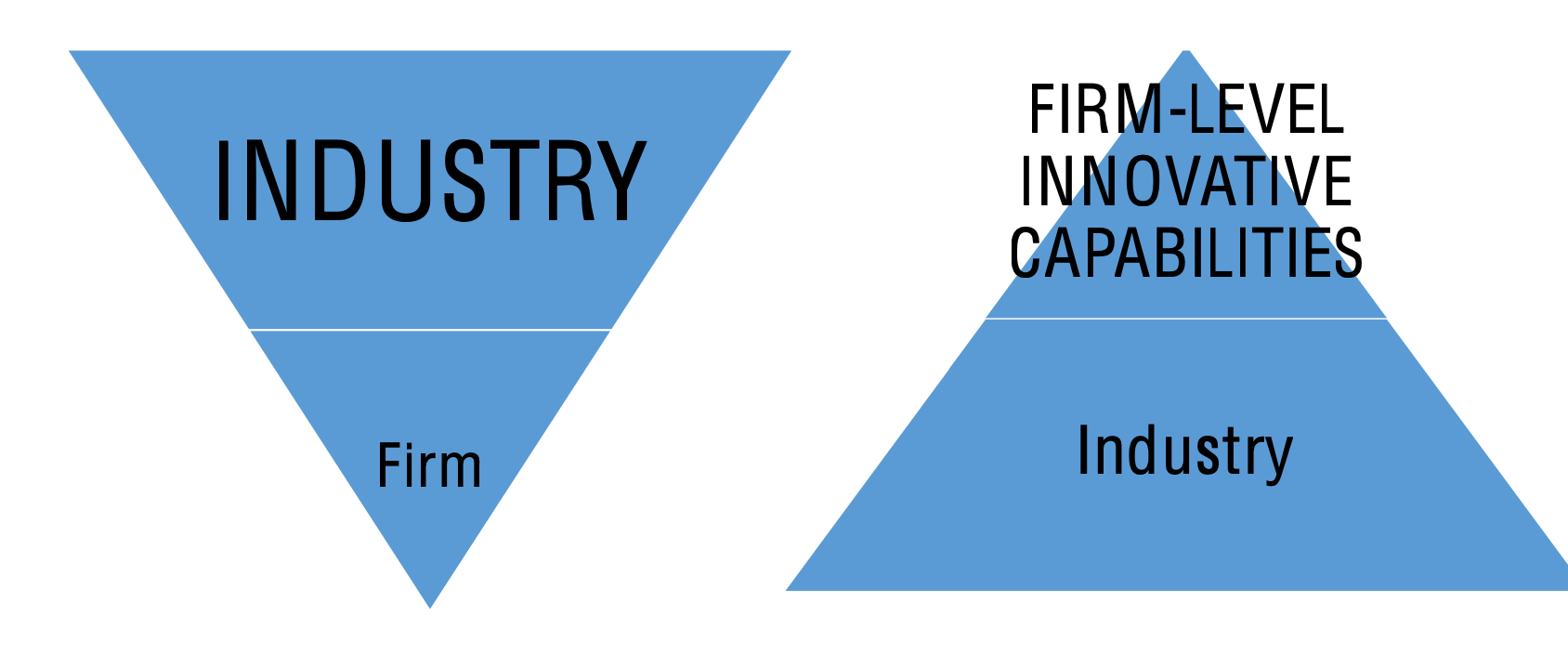
Dynamic digital capabilities
- definition
- firm-level strategic ability to combine inside and outside digital competences to address volatile environments and periods of rapid change
- four types
- democratized innovation
- user-to-user or peer-to-peer collaboration produces positive network effects with public good benefits
- founders no value
- e.g. Wikipedia
- crowdsourcing
- user-to-company collaboration produces positive network effects, often through 2-sided markets so that free users are subsidized by paying customers
- typically, a company is able to capture tangible, monetary benefits from the community in exchange for continued innovation and improvement
- users can get profit
- e.g. voting for your perference
- platform innovation
- company-to-user innovation where a company provides the platform for users and developers to distribute their software, applications or digital goods to their social or professional networks or to the marketplace at large.
- e.g. Apple, because it provided a platform
- recombinant innovation
- company to company
- e.g. Apple and Gracenote
- democratized innovation
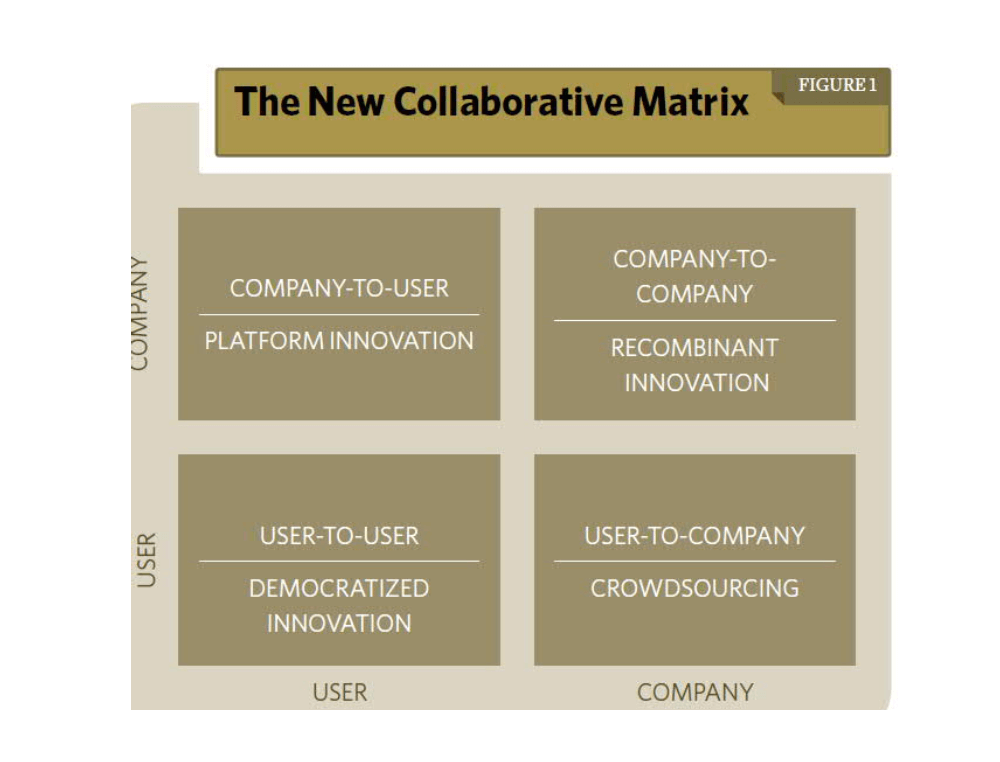
From Pipelines to Platforms
History
- cellphones transformed to smartphones
- in 2008, the “dumb cellphone” became a smartphone with a networked platform of downloadable and shareable software apps
The economies of physical vs. digital goods
- the shift from physical to digital goods triggered a shift from demand-side economies to supply-side economies
- supply-side scale
- if the company makes a lot of cellphones, the cost would be lower
- e.g. Nokia
- demand-side scale (or network effects)
- the value to users actually increases with the network, rather than with manufacturing costs
- e.g. Apple
- supply-side scale

Revenues per cellphone vs. revenues per app user
- revenues per cellphone became revenues per user, with billions of apps downloaded
- examples
- Nokia: per cell phone
- Apple: both iPhone and revenues generated from users (may not much money from per user, but the number of users is large)
- ARPU: average revenue per user
- take 30% fee from developers
- examples
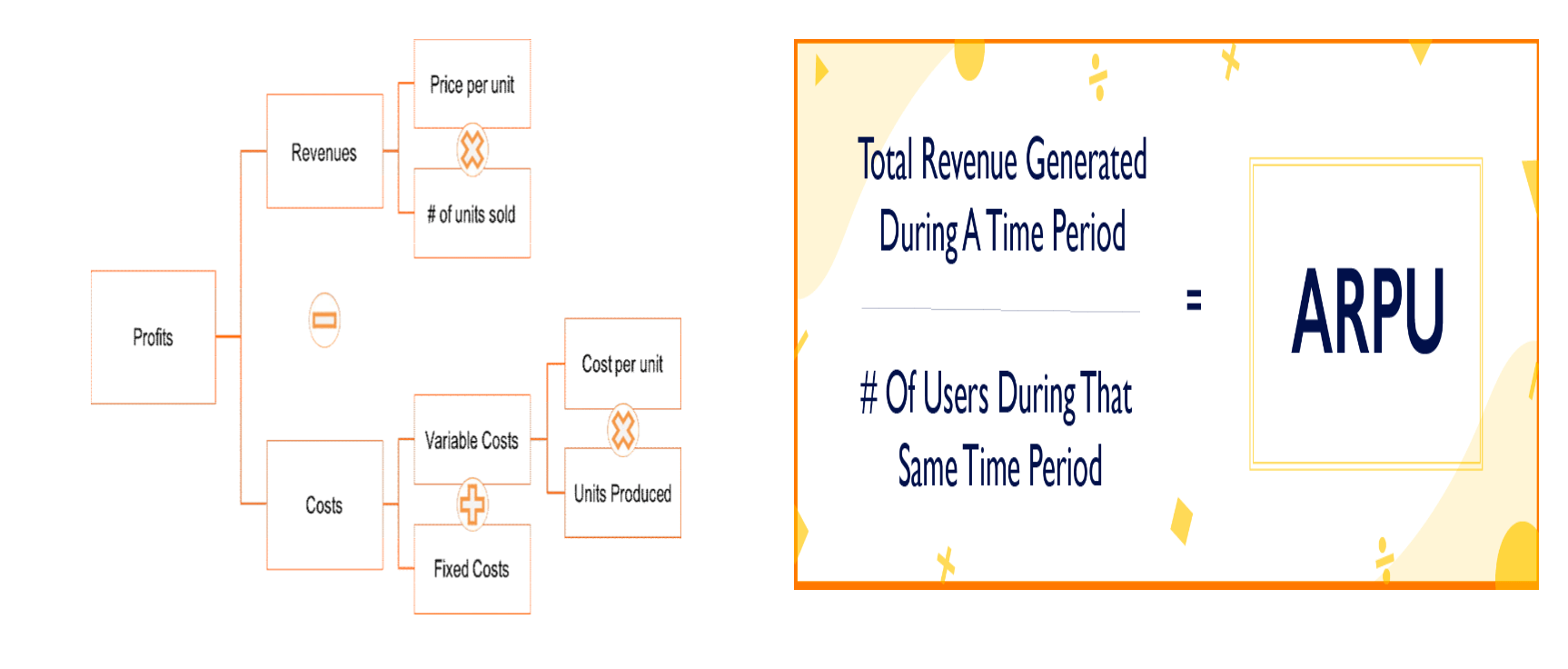
- digital mobile-enabled substitues in 2020
- digital companies are more profitable because they are able to use demand-side economies, rather than supply-side economies
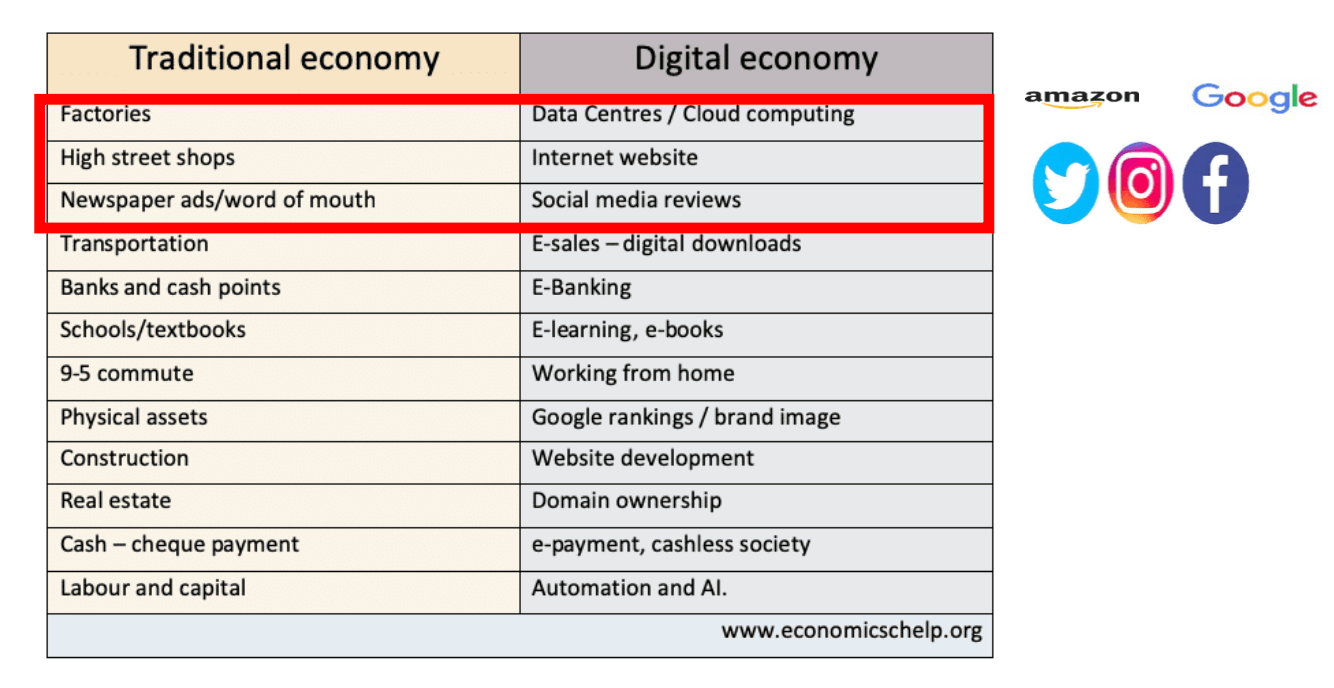
- digital companies are more profitable because they are able to use demand-side economies, rather than supply-side economies
ABCD technologies
- ABCD
- AI
- blockchain
- cloud
- data
- linear thinking in the past, but now is exponential thinking
- exponential growth in digital goods = zero transaction costs + networks + crowds
- “dumb cellphone” value chain in 2007 was linear (as the first picture of this page)
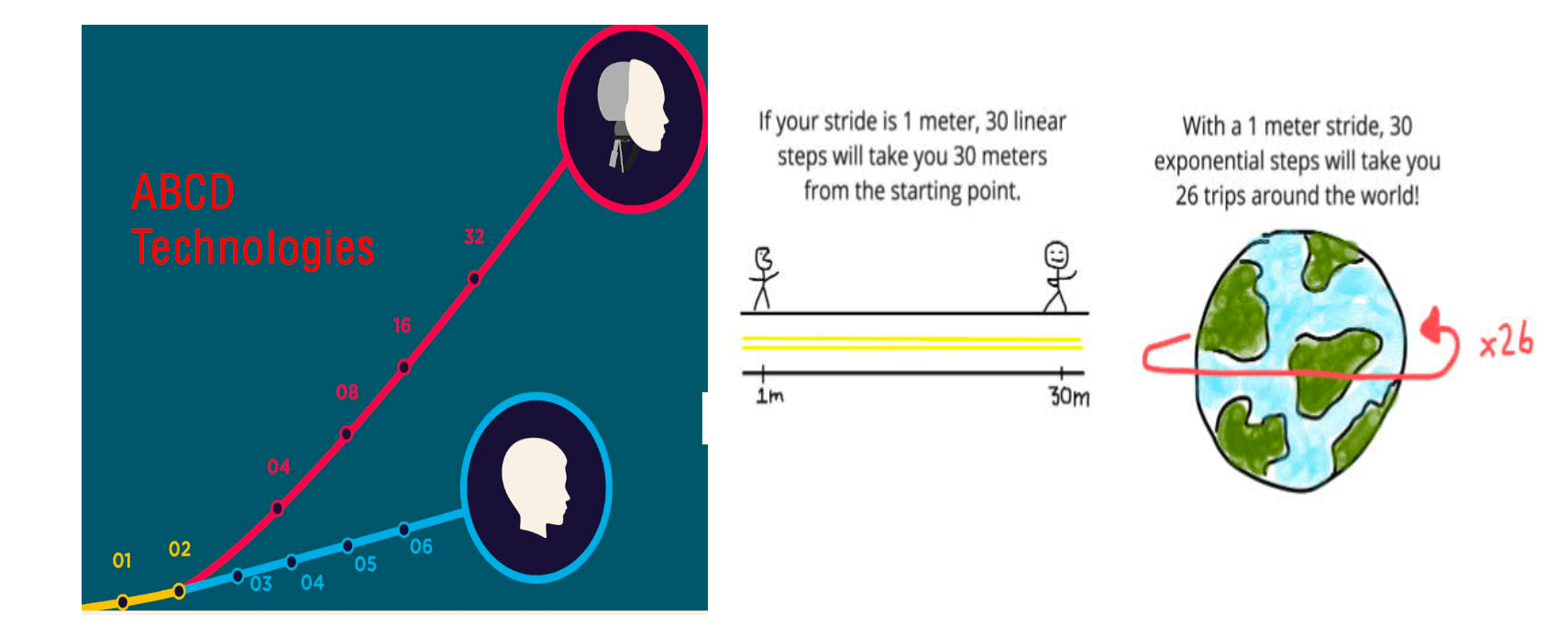
The Platform Ecosystem
Five-Forces and industry structual analysis
- Porter’s Five-Forces industry structure assumes that the profitability of industry competitors is determined by suppliers and buyers in a linear
value chain or pipeline.

A platform is a nonlinear dynamic ecosystem
- four types of platform ecosystem players and roles
- owners of the platform that control IP and governance
- providers that serve as the platform interface with users
- producers that create offerings on the platform
- consumers that use those offerings
- example: Apple Appstore’s platform ecosystem
- Apple = owners of the AppStore iOS platform that control IP and governance
- Apple iPhone and iPad = providers that serve as the iOS platform interface with users
- Apple iPhone iOS App Developer = producers that create offerings on the platform
- consumers that use those offerings
- Apple’s AppStore is a non-linear, dynamic and interactive ecosystem
- Apple orchestrates and facilitates the network and users and developers and receives 30% of the app developers' revenues for managing the AppStore
- ecosystem platforms like the AppStore and Google Play have created positive sum marketplaces and blue oceans out of traditional zero sum industries
- where value is created for users, developer, providers and platform owners
- three types of games
- positive sum: economic, financial or social rewards are created as a result of playing the game
- zero sum: the total rewards available from playing the game are independent of the procee of play
- negative sum: economic, financial or social rewards are destroyed as a result of playing the game
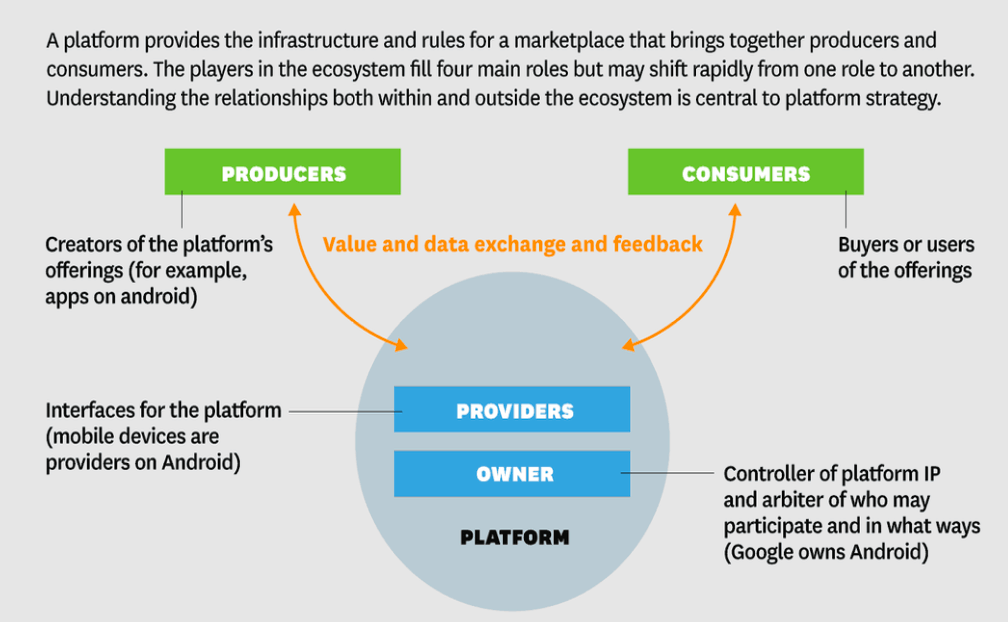
AI Business Platforms
The Alibaba AI smart business process
- overview
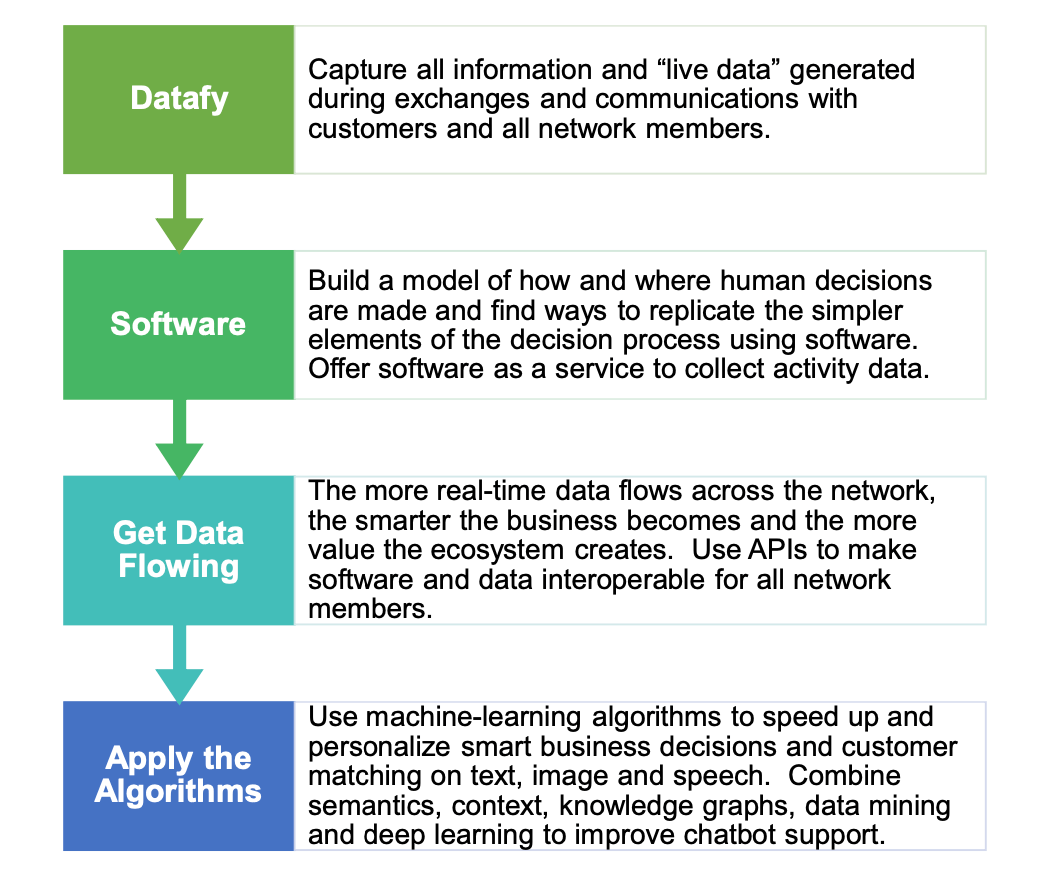
- a four-step process
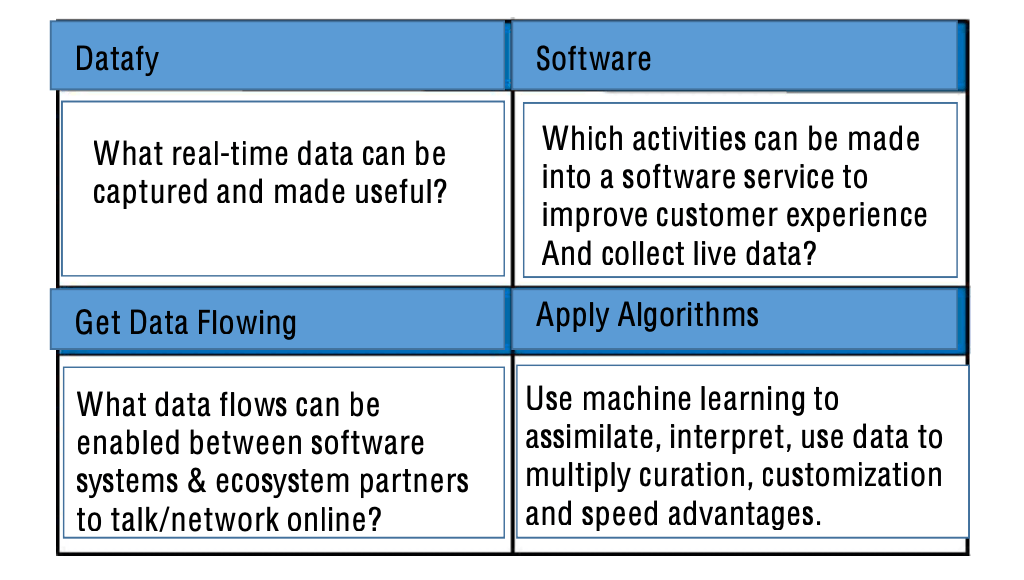
- examples
- applying the AI smart business four-step process for Ant Financial Micro Loans

- applying the AI smart business four-step process for online bike sharing and sesame credit

- applying the AI smart business four-step process for Ant Financial Micro Loans
- examples
Diagramming platforms on the business model canvas template
- structure
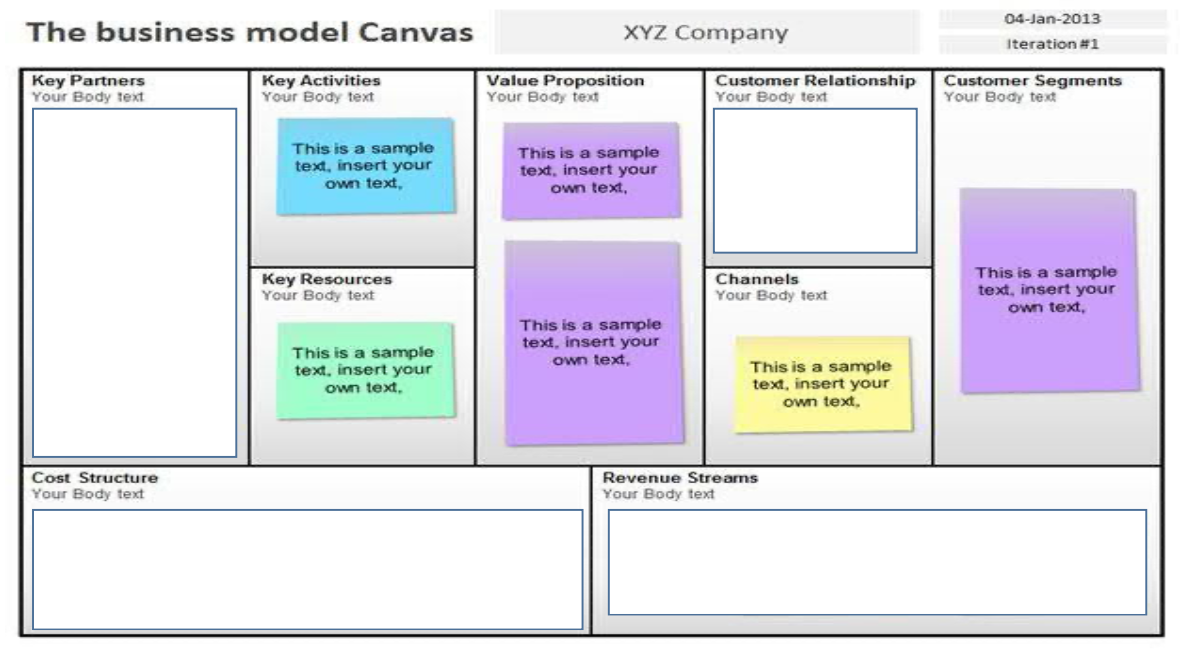
- example: Apple iOS AppStore platform
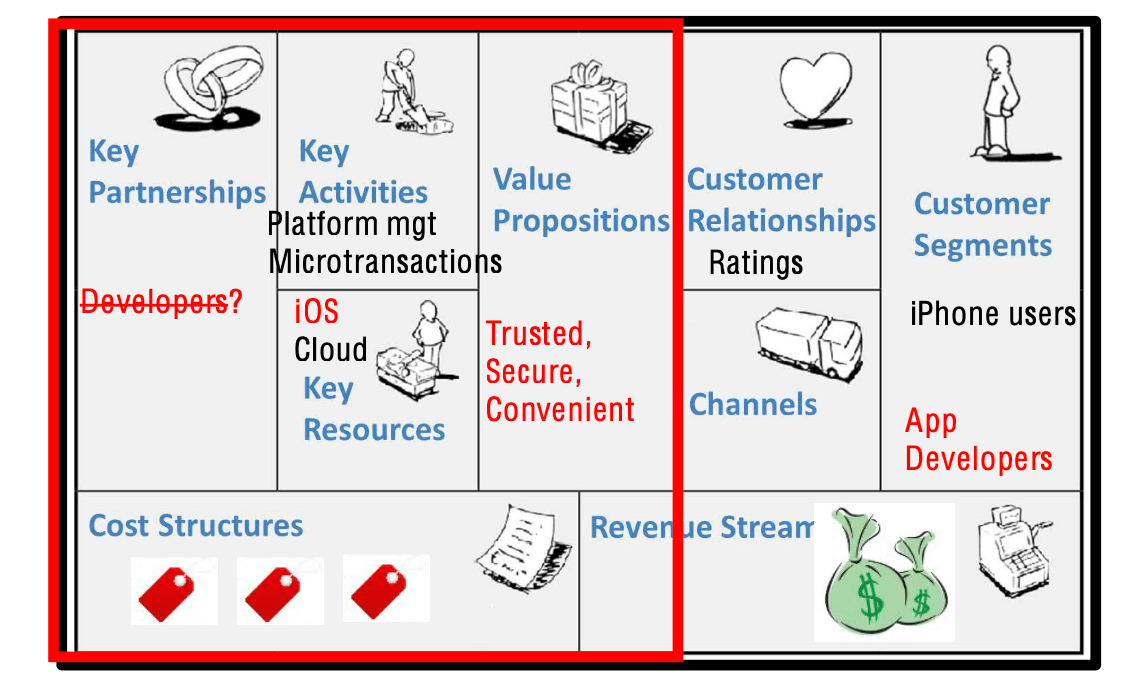
Additional Reading
ecom7121 dynamic digital capabilities dynamic capabilities platforms and ecosystems introduction
824 Words
2020-10-27 17:37